About the historical places in Turkey
Turkey is a country full of ancient history and rich cultural heritage, with numerous historical sites and landmarks that have stood the test of time. From ancient ruins to grand mosques, Turkey is a must-visit destination for history buffs and travelers alike. In this article, we will explore some of the top historical places in Turkey, including Istanbul, which is home to some of the most spectacular landmarks in the world.
1. Ephesus
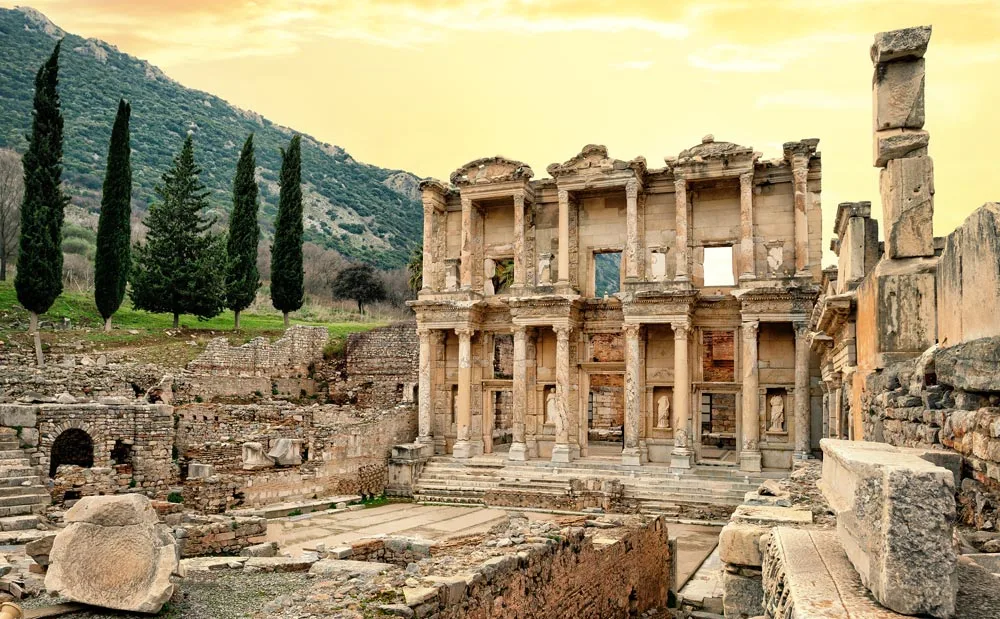
Ephesus is undoubtedly one of the most impressive historical places in Turkey. Located in the Aegean region of the country, this ancient city was once a thriving port and a major center of trade and culture. Today, it is one of the best-preserved ancient cities in the Mediterranean and a must-visit destination for anyone interested in history, architecture, and archaeology.
The city of Ephesus dates back to the 10th century BC, when it was settled by the Ionian Greeks. Over the centuries, it was ruled by a succession of empires, including the Persians, the Romans, and the Byzantines. During its heyday, the city was known for its grand architecture, including the Library of Celsus, the Temple of Artemis, and the Great Theatre, which could seat up to 25,000 people.
Today, visitors to Ephesus can explore the remains of this once-great city, including its streets, temples, and public buildings. Highlights include the Terrace Houses, which were once the homes of the wealthy and elite, the Temple of Hadrian, and the impressive Library of Celsus. The Great Theatre, which is still used today for concerts and other events, is also a must-see.
Tips for visiting Pamukkale:
When visiting Ephesus, it is important to wear comfortable shoes and clothing, as there is a lot of walking involved. To get the most out of your visit, consider hiring a licensed guide, who can provide insights into the history and culture of the site. You may also want to visit early in the day or later in the afternoon to avoid the heat and crowds.
Nearby attractions: The House of the Virgin Mary, which is believed to be the final resting place of the Virgin Mary, and the ruins of the Temple of Artemis, one of the Seven Wonders of the Ancient World.
2. Pamukkale
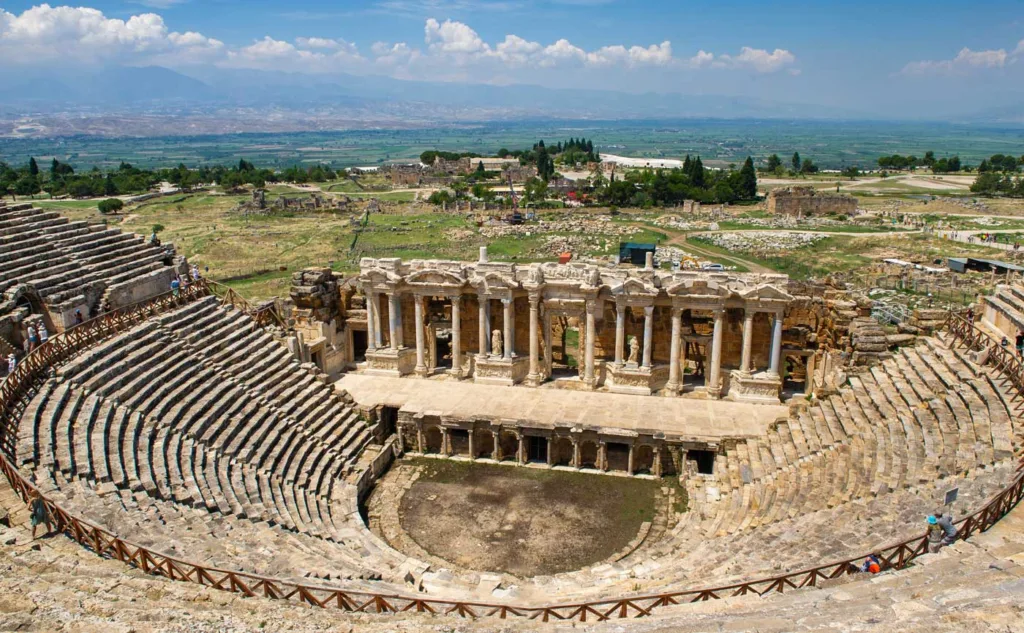
Pamukkale, which means “cotton castle” in Turkish, is a natural wonder and UNESCO World Heritage Site located in western Turkey. The site is famous for its terraced pools of mineral-rich water, which flow down the white travertine terraces and create a stunning visual effect. The water is known for its healing properties and has been used for therapeutic purposes since ancient times.
In addition to the natural beauty of the terraces, Pamukkale is also home to the ancient city of Hierapolis, which was once a thriving spa town in ancient times. Visitors can explore the well-preserved ruins of ancient temples, theaters, and baths, and learn about the fascinating history of the area. Some of the most impressive structures include the amphitheater, the Temple of Apollo, and the Necropolis.
Visitors can also take a dip in the thermal pools at the site, which offer a unique and relaxing experience. However, it’s important to note that visitors are no longer allowed to walk on the travertine terraces, in order to protect the site from damage.
Tips for visiting Pamukkale:
- Wear comfortable shoes as the site involves a lot of walking and climbing.
- Be respectful of the site and do not touch or walk on the travertine terraces.
- Visit early in the morning or late in the day to avoid crowds and enjoy the peaceful atmosphere of the site.
- Consider hiring a guide to learn more about the history and significance of the site.
3. Topkapi Palace
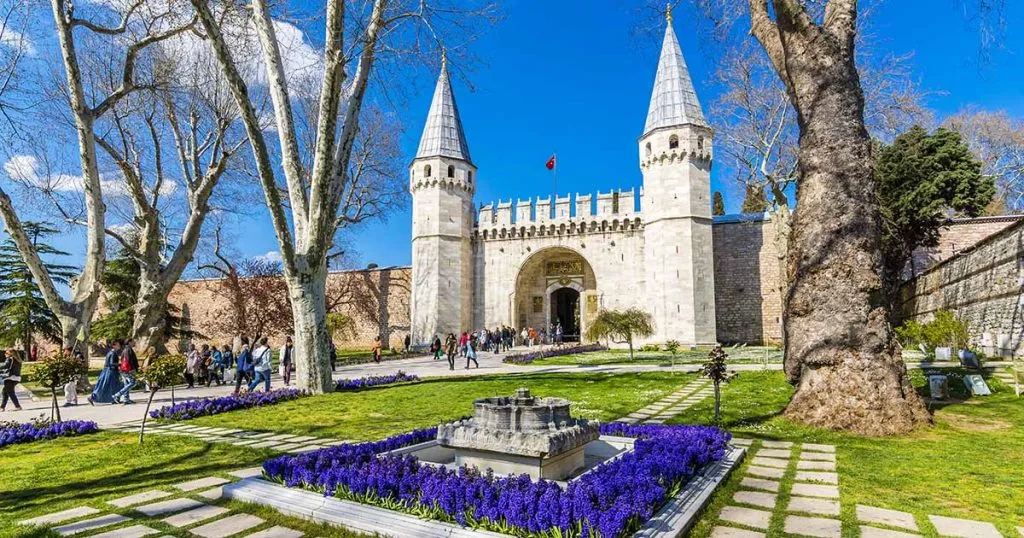
Located in Istanbul, Topkapi Palace is a grand palace that was once the residence of the Ottoman sultans. It is now a museum that houses a vast collection of Ottoman treasures, including jewelry, manuscripts, and weapons. Visitors can explore the palace’s many courtyards, gardens, and opulent rooms.
Suggested Read: Topkapi Palace Museum & Harem
4. Cappadocia
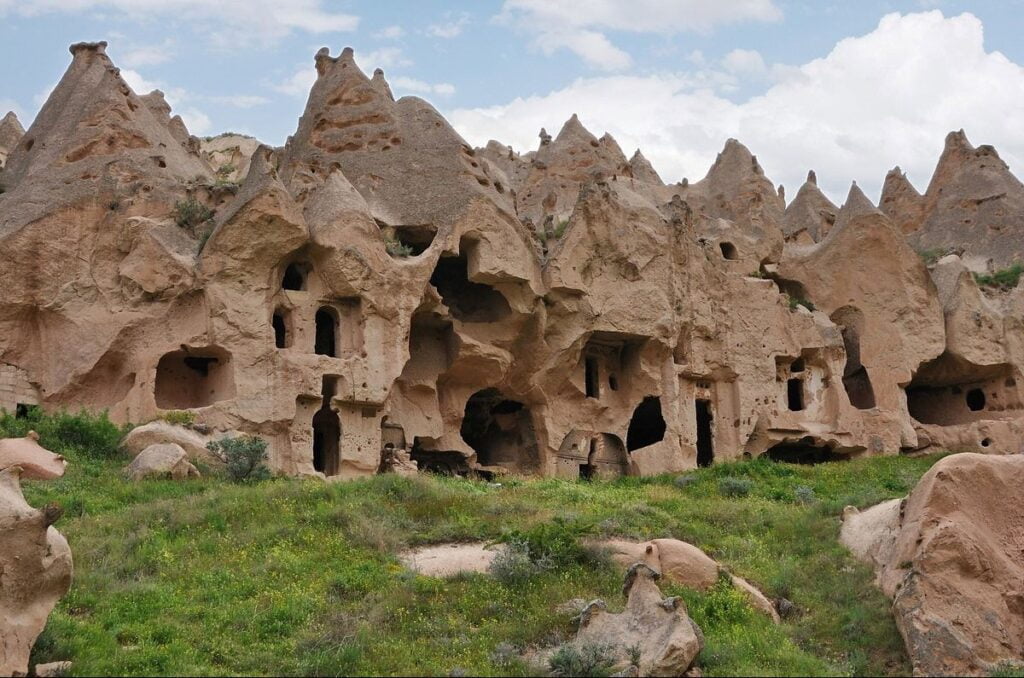
Located in central Turkey, Cappadocia is a unique landscape of volcanic rock formations, known as “fairy chimneys.” It is also home to numerous underground cities and cave dwellings, which were once used by early Christians to escape persecution.
Suggested Read: Cappadocia Travel Guide | All That You Need to Know
5. Hagia Sophia

Hagia Sophia is one of the most famous historical places in Turkey. Originally built as a church in the 6th century, it was later converted into a mosque and now serves as a museum. Its impressive architecture and rich history make it a must-visit destination for anyone interested in Turkey’s cultural heritage.
As you walk through the massive doors of Hagia Sophia, you’ll be transported back in time to a world of Byzantine grandeur. The massive dome, towering above you, is a masterpiece of engineering that has stood the test of time for over 1,500 years. The intricate mosaics and frescoes that adorn the walls are a testament to the skill of the Byzantine artists who created them.
One of the most unique features of Hagia Sophia is its minarets, which were added during the Ottoman period when the building was converted into a mosque. The minarets provide a stark contrast to the building’s Byzantine architecture and serve as a reminder of the site’s rich and complex history.
Suggested Read: Hagia Sophia Mosque in Istanbul
6. The Blue Mosque

The Blue Mosque, also known as Sultan Ahmed Mosque, is a stunning historical landmark in Istanbul, Turkey. It was built in the early 17th century during the reign of Sultan Ahmed I and has become a popular tourist attraction due to its unique architecture, intricate tilework, and blue domes. The mosque is open to visitors for free, but it is important to dress appropriately and remove your shoes before entering. It is recommended to visit early in the morning to avoid crowds and capture the best photos. The mosque is located near other popular attractions such as Hagia Sophia and the Grand Bazaar, making it a convenient stop on any tour of Istanbul’s historic landmarks.
Suggested Read: The Blue Mosque (Sultan Ahmet Camii)
7. Alanya Castle
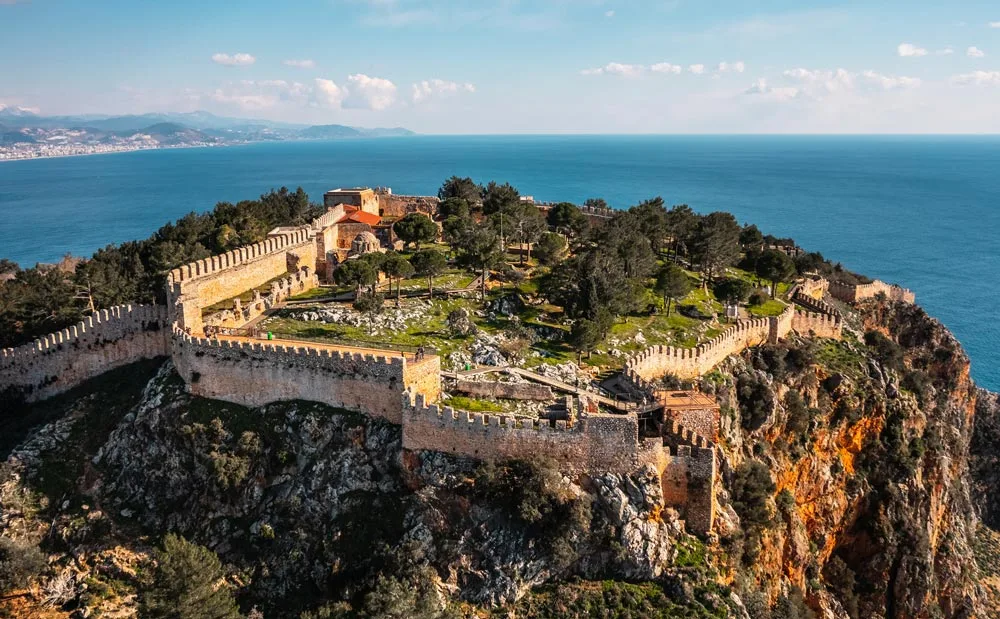
Alanya Castle is a magnificent fortress that stands atop a rocky hill overlooking the Mediterranean Sea. It was built by the Seljuk Turks in the 13th century and has served as a defensive stronghold for centuries. The castle offers breathtaking views of the surrounding area and is a must-visit for history enthusiasts and architecture buffs. Visitors can explore the castle’s many towers, walls, and gates, as well as its inner courtyard and underground tunnels. The castle also houses a small museum featuring exhibits on the history of the region. For the best experience.
8. Troy
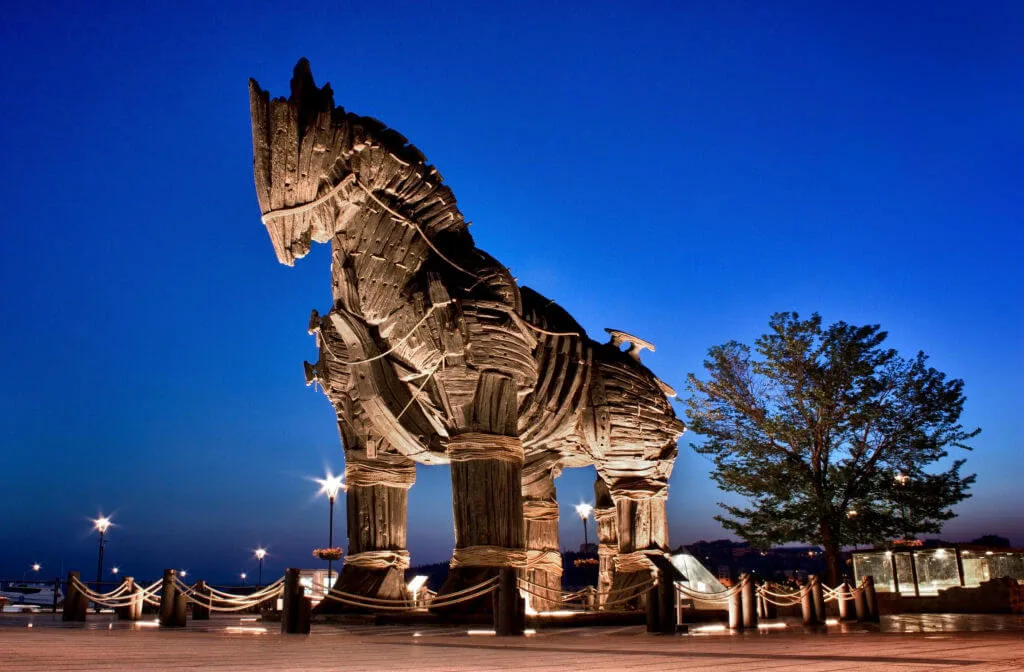
Troy, located in the northwest of Turkey, is a famous archaeological site that has a rich history dating back more than 4,000 years. The ancient city was destroyed and rebuilt several times over the course of its history, with the most famous being the Trojan War. Visitors can explore the remains of the city walls, the famous Trojan Horse, and other historical structures. Troy is also a UNESCO World Heritage site and has been attracting visitors from all over the world for decades. A visit to Troy offers a fascinating glimpse into the past and is a must-see for history lovers and anyone interested in ancient civilizations.
Tip for visiting Troy:
Wear comfortable shoes as there is a lot of walking involved and bring a hat and sunscreen as it can get very hot during the summer months.
9. Mount Nemrut

Mount Nemrut is a historical site in southeastern Turkey that dates back to the 1st century BC. It is home to the ruins of a royal tomb and statues of gods and kings, which are among the most remarkable and unique relics of the Hellenistic period. The site is also known for its stunning sunrises and sunsets, making it a popular destination for both history buffs and nature lovers. Visitors can hike to the top of the mountain to see the giant statues and enjoy the beautiful views. To fully appreciate the significance of the site
Tip for visiting Mount Nemrut:
it’s recommended to hire a local guide who can provide more in-depth information about the history and cultural significance of Mount Nemrut.
10. Hierapolis
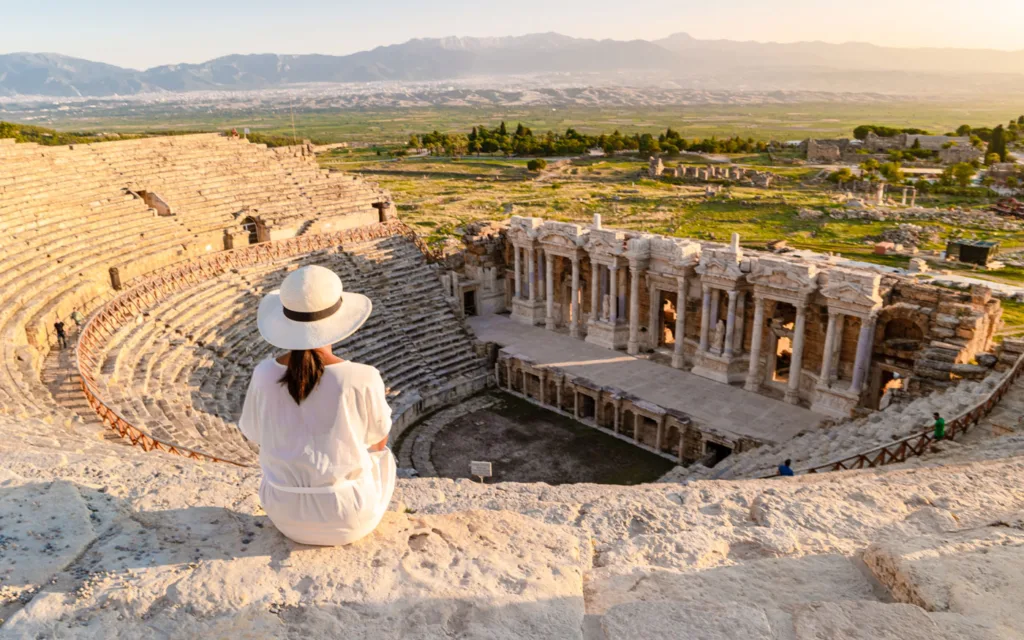
Hierapolis, located in southwestern Turkey, was once a thriving Roman city that was famous for its hot springs and thermal baths. Today, it is a popular tourist destination known for its well-preserved ruins of ancient temples, theaters, and baths. Visitors can explore the beautifully preserved ancient city and take a dip in the warm waters of the natural pools, which are said to have therapeutic properties. The highlight of Hierapolis is the beautifully preserved amphitheater, which dates back to the 2nd century AD and is still used for performances and concerts today. Visitors can also visit the nearby necropolis, which is home to over 1,200 tombs carved into the cliffs. A visit to Hierapolis is a journey back in time to the height of the Roman Empire and an opportunity to experience the natural beauty of Turkey’s southwestern region.
11. Ani Ruins

Ani Ruins, located in eastern Turkey, near the border with Armenia, is a must-visit historical site for those interested in ancient ruins and medieval architecture. Once a bustling medieval city, the ruins of Ani offer visitors a glimpse into the rich history of the region. With its stunning cathedral, citadel, and numerous churches and mosques, Ani was an important political and cultural center for centuries.
Today, visitors can explore the well-preserved ruins of Ani and witness the impressive architecture and intricate stone carvings that have withstood the test of time. In addition to the historical significance, Ani is also known for its stunning views of the surrounding landscape, including the nearby Ararat Mountains.
To make the most of your visit to Ani, it is recommended to hire a guide who can provide insight into the history and significance of the site. Visitors should also wear comfortable shoes as the ruins cover a large area and there is a fair amount of walking involved. A visit to Ani is sure to leave a lasting impression and provide a deeper understanding of the rich cultural heritage of Turkey.
12. Aizanoi
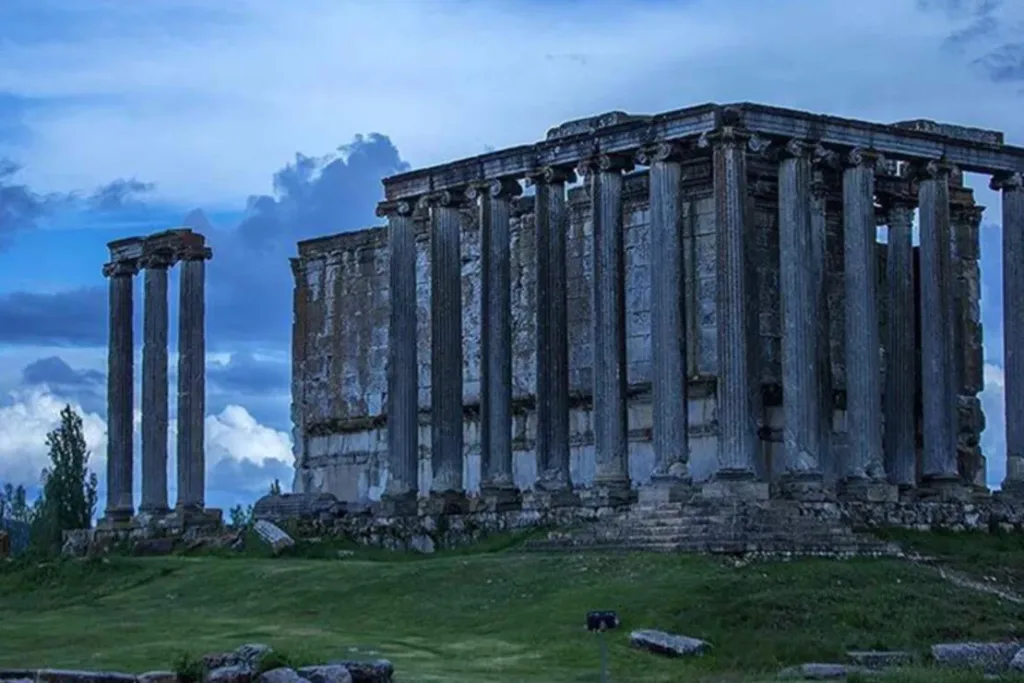
Aizanoi is a hidden gem of ancient Turkey that is slowly gaining popularity among history enthusiasts. This ancient city is located in western Turkey and is home to some of the most well-preserved Roman ruins in the country. Visitors can explore the impressive Temple of Zeus, the Stadium, the Theater, and the impressive Baths of Faustina. Aizanoi also boasts an impressive Roman bridge and a unique clock tower, which was built during the Ottoman period. With its breathtaking natural surroundings, fascinating history, and well-preserved ruins, Aizanoi is definitely worth a visit for anyone interested in historical places in Turkey.
13. Antalya Museum
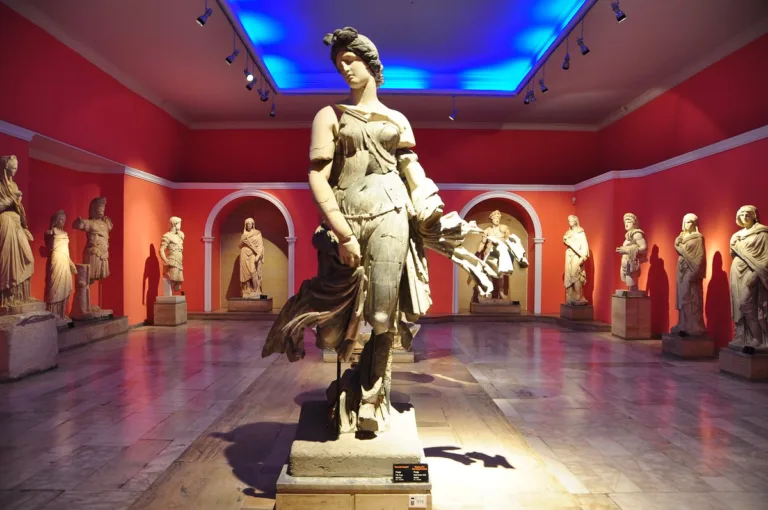
Antalya Museum, also known as Antalya Archaeological Museum, is one of the largest and most important museums in Turkey. It houses a vast collection of artifacts from the ancient city of Perge, as well as from other sites in the region. The exhibits cover a wide range of periods and civilizations, from the Paleolithic era to the Ottoman period.
Visitors to the museum can see some of the most important artifacts of the ancient world, such as statues, mosaics, and sarcophagi. The museum also features interactive displays and multimedia presentations that help bring the history of the region to life.
One of the highlights of the museum is the Hall of Gods, which features a collection of monumental statues from the ancient city of Perge. Another notable exhibit is the Antalya Treasure, a collection of gold and silver objects that were discovered in a tomb near the city.
The museum is located in the heart of Antalya and is easily accessible by public transportation. Visitors are advised to allow plenty of time to explore the extensive collection and to take advantage of the museum’s guided tours and audio guides, which are available in several languages.
Suggested Read: The Ultimate Travel Guide to Antalya
14. Aphrodisias
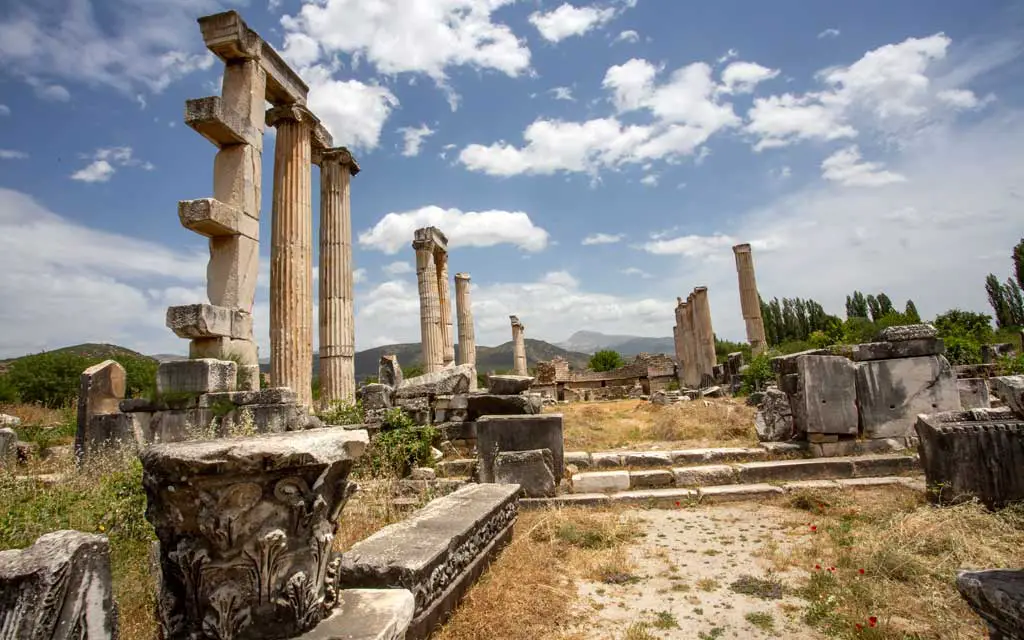
Aphrodisias is a stunning ancient city located in the southwestern part of Turkey. It was named after the goddess of love and fertility, Aphrodite, and has numerous well-preserved structures and ruins that date back to the Roman period. The most impressive structure is the Temple of Aphrodite, which was built in the 1st century AD and is surrounded by beautiful marble columns. The city also has a well-preserved stadium, an impressive theater, and several other ancient structures that showcase the exquisite craftsmanship of the Roman era. Visitors can learn more about the city’s history by visiting the museum, which houses an impressive collection of artifacts from the area. Don’t miss the opportunity to see the stunning reliefs and sculptures that depict scenes of daily life, mythical creatures, and historical figures.
Tip: Avoid visiting during winters, the frequency of buses is quite thin in this weather.
Conclusion:
Turkey is a country with a rich and diverse history, with countless historical sites and landmarks to explore. Whether you are interested in ancient ruins, grand palaces, or natural wonders, Turkey has something for everyone. From the stunning landscapes of Cappadocia to the grandeur of Istanbul’s Topkapi Palace and Hagia Sophia, there are endless opportunities to explore and learn about Turkey’s fascinating past. So pack your bags and get ready to embark on an unforgettable journey through Turkey’s most historic and cultural sites.
Frequently Asked Questions About Historical Places In Turkey
Turkey has many historic places, but one of the most famous and historic places in Turkey is the city of Istanbul, which has been the capital of three great empires: Roman, Byzantine, and Ottoman. Istanbul is home to many historic sites, including the Hagia Sophia, Blue Mosque, Topkapi Palace, Grand Bazaar, and the Basilica Cistern, among many others. Other historic places in Turkey include Ephesus, Troy, Cappadocia, and Mount Nemrut, among others.
The oldest temple in the world is a subject of debate among historians and archaeologists. However, one of the oldest known temples is Göbekli Tepe, located in modern-day Turkey, which dates back to around 10,000 BC. It is believed to be the oldest known example of monumental architecture in the world and is considered a significant archaeological discovery.
It’s difficult to give an exact number, but there are thousands of historical sites and landmarks in Turkey. This is due to the country’s rich history, which dates back to ancient times and includes various empires, kingdoms, and civilizations. Some estimates suggest that there are over 40,000 registered historical and cultural artifacts and sites in Turkey, with many more yet to be discovered or excavated.
The Temple of Artemis at Ephesus was one of the Seven Wonders of the Ancient World and was located in present-day Turkey. However, it is important to note that the temple is now in ruins and only a few columns remain.
According to the Turkish Ministry of Culture and Tourism, the most visited landmark in Turkey is the Sultan Ahmed Mosque, also known as the Blue Mosque, located in Istanbul. It attracts millions of visitors each year.



